On March 7, 2019 The Bahamas and Disney signed a Heads of Agreement (HOA) for Lighthouse Point. The signing of the HOA was done behind closed doors, Bahamian media was not invited, nor advised of the meeting. A couple days later, The Bahamas Prime Minister Hubert Minnis announced the signing at a March 9th town hall meeting in Tarpum Bay at the Eleuthera Arts and Cultural Center which followed a press release from The Bahamian Government.
After pressure from local groups citing the agreement as a secret deal with Disney, the Prime Minister agreed to table the HOA on March 20, 2019 during a House of Assembly session. The tabling of Disney’s Lighthouse HOA means that it became public record for everyone to review.
The 38-page Heads of Agreement between The Government of the Commonwealth of The Bahamas and DCL Island Development, Ltd. in all practical purposes is a contract describing Disney’s plans for the property as well as concessions from both parties.
You can read the entire Lighthouse Point Heads of Agreement via the scan of the tabled document. Alternatively, I created a searchable text version of the HOA simply because it’s easier to lookup information. Please note, there are some typos some intentional as they were in the scan, and others as a result of the transcription. As a results, the scanned version should be considered official and the text version considered an unofficial. Hey, if anyone has access to the Castaway Cay (Gorda Cay) Heads of Agreement, please let me know.
Below are some of the more interesting items factoids found in the Lighthouse Point HOA:
- HOA Signed: March 7, 2019 by Camille Johnson and Jeffery Vahle.
- Public Announcement of Signing: March 9, 2019 in Tarpum Bay, Eleuthera at the Eleuthera Arts and Cultural Center
- Development & Construction: up to 4 years
- Potential Opening: 2023
- Estimated Development Cost: $250 million to $400 million USD
The HOA mentions the new Triton Project Class ships will have 4000 passenger berths. Upon full build out, the 7-ship fleet will have total passenger berths in excess of 25,000. Disney understands that once the 3 new cruise ships are added to the fleet and in full service in 2024, Disney Cruise Line intends to increase the number of its ships’ calls at the Port of Nassau and/or the Port of Freeport by 30-40% over the number of calls made by DCL ships at the Port of Nassau in 2018, subject always to berth availability. Based on my count, the total number of calls to Nassau in 2018 for the Magic: 19, Wonder: 13, Dream: 99, and Fantasy: 1 totaled 132 calls. An increase of 30-40% would be somewhere in the range of 40 – 52 visits which could easily be accomplished with the rumored year-round Dream-class ship sailing from PortMiami.
Disney acquired approximately 751 acres from a private owner a parcel of property (image from HOA below) in South Eleuthera known as Lighthouse Point for development as a cruise port and an entertainment facility.
By signing the HOA, the The Bahamian Government, expects Disney’s Lighthouse Point project to bring significant economic benefit to The Bahamas and its people. As a result, The Bahamas agreed to certain incentives and concessions.
The Bahamas Government will help Disney by overseeing the expeditious review of applications and provide all necessary permits and approvals for the acquisition of the property.
The Bahamas will lease the seabed, the underwater land that consisting of the proposed pier, bertha, and marina to Disney for a term of 50 years and the right to renew for one further term of 50 years. The lease includes language, that marina is not open to the public and is exclusive to Disney and their invitees such as third party tour operators akin to those at Marges Barges at Castaway Cay. The Government will lease the seabed to Disney at the annual base rent in the amount of $1,000/acre for the first 10 years. Followed by a rent review every 10 years with an increase in proportion to the increase in the Consumer Price Index for All Urban Consumers (CPI-U) – US Average, All Items (1982-984=100) published by the US Department of Labor during the relevant 10 year portion of the term. Disney rent payments for the lease will not be subject to Stamp Duty.
Disney agrees to comply with the requirements of all planning and other relevant laws and regulations in relation to the construction and operation of the Lighthouse Point development project and agrees to obtain all permits, licenses, certificates, approvals and other authorizations necessary.
Disney’s development of Lighthouse point is estimated to be in the range of $250 million to $400 million US dollars. The development will include the following:
- Construction of the Pier, Berth and Marina
- Dining and beverage facilities for the sale of alcoholic beverages, merchandise and retail facilities for the sale of goods and services, spa facilities, aquatics and recreational facilities;
- Beach expansion, enhancements and improvements
- Themed buildings and themed elements, play areas, attractions and structures
- Maintenance and utility plants and facilities
- Employee dining, housing and recreation facilities
Disney will work with The Bahamas Government and Bahamian historians, artists and cultural experts to integrate Bahamian voices and artistic expression in the design of the Project, making it a reflection of The Bahamas, rooted in local stories and traditions.
Disney will follow a high level of environmental and conservation stewardship and sensitivity that have been used at other company projects around the world. The commitment by Disney includes developing approximately only 20% of the Property, much for low density uses, like the placement of beach chairs, umbrellas and small support structures for food and beverage, merchandise, as well as walking and bike paths and other similar uses. The project will use using sustainable building practices and methods in the development of the destination whenever possible with an emphasis on water and energy conservation.
Disney commissioned Oxford Economics, a leading provider of economic analysis, forecasts and consulting advice, to identify the economic impacts associated with Disney’s Lighthouse Point project. The analysis examined a 25-year timeline, including four years of development and construction, and capturing ongoing operations from 2023 to 2043. Over the 25-year time horizon, the project is expected to provide an $805.1 Million increase in Bahamian GDP and a $357.5 Million increase in Bahamian Government revenues.
Disney will employ a minimum of 120 Bahamians during the construction phase of the project. However, due to the complexity of some of the construction such as the Pier, it may be necessary to hire greater numbers of skilled non-Bahamians thus both parties agree over the life of the initial construction phase Disney will focus on keeping an overall ratio of 80% Bahamian workforce.
Disney estimates the Lighthouse Point project will generate approximately 150 permanent jobs for Bahamians once the destination is operational. As is done at Castaway Cay, Disney will offer employment positions to Bahamians that encompass a breadth of disciplines, including horticulture, transportation, security maintenance, custodial, food and beverage, recreation/lifeguards, as well as management positions and opportunities for advancement. These positions will provide all employees with health benefits.
Additionally, Disney will work with The Bahamas Government and local communities to develop training and professional development programs for Bahamians desiring to work at the destination.
Disney will also shall put in place and sustain multi-disciplinary on-the-job technical skills-training programs designed to equip their Bahamian employees with the level of technical proficiency necessary for promotion and advancement.
Disney agrees to provide, at a minimal rent, space for selected Bahamian vendors sell authentic, high quality Bahamian retail goods, services, souvenirs, arts and crafts, Bahamian tee-shirts and any other merchandise on days when a Disney Cruise Line ship is in port.
Disney will give Bahamian owned and operated business priortity to offer their services to the Disney Cruise Line guests during port days for Port Adventures. Bahamian entertainers will be hired at competitive rates for live entertainment experiences for cruise passengers.
The Bahamian Government will allow Disney Cruise Line to own and operate merchandise and service locations for the cruise ship passengers as well as other guests for the sale of Disney Merchandise and sundry items, and recreational equipment rental such as self-propelled non-motorized boats, snorkeling equipment, tubes, floats, rafts, and bikes.
Disney agrees to purchase and use a minimum of 5% of its agricultural and seafood products from Bahamians as well as utilize Bahamian materials, products and services in connection with the development and operation of the Lighthouse Point project.
The Heads of Agreement states that Disney will apply to the Minister responsible for Maritime Affairs and the Governor General to exercise their powers of the Port Authorities Act to grant Disney Cruise Line exclusive rights to operate the Pier, Berth and Marina and their related improvements as a private port.
Walt Disney’s Conservation Legacy
“You’ve probably heard people talk about conservation. Well, conservation isn’t just the business of a few people. It’s a matter that concerns all of us. It’s a science whose principles are written in the oldest code in the world, the laws of nature. The natural resources of our vast continent are not inexhaustible. But if we will use our riches wisely, if we will protect our wildlife and preserve our lakes and streams, these things will last us for generations to come.”
– Walt Disney, 1950
Environmental concerns have been brought up since Disney was first attached to the purchase of the property. The HOA lays out the roadmap for what is expected of Disney to protect the environment. Disney will not begin construction until the Environmental Impact Assessment (EIA) and the Environmental Management Plan (EMP) have been completed, review and approved by the BEST Commission and any other Relevant Government Agencies. Disney agrees to take all necessary steps to remedy or mitigate any damage to the environment resulting from the construction Disney has been given permission to use sand from mining operations to enhance, improve and maintain beaches. The Disney Conservation Fund has given approximately $3 million to support research and conservation projects in The Bahamas since 1997.
Following the approval of the environmental assessments, Disney agrees to maintain and preserve the environmental integrity of the property. During the construction phase, Disney must build in documented penalties for violating sound environmental to any construction contracts. Disney must allow and cover the cost of routine inspections by BEST and other governmental agencies and take any steps necessary to mitigate any damage to the environment.
As previously mentioned, Disney acknowledges that sustainability initiatives with respect to water conservation, climate research, coastal resilience, carbon sequestration, restoration of coastal wetlands, use of renewable energy, reduction of GHG emissions and improve functionality of mangrove ecosystems to increase carbon sink ability to proper management are important to The Bahaminan Government. As a result, Disney will incorporate environmentally friendly technology and green building practices designed to reduce water usage, increase energy efficiencies in light and any cooling systems and increase efficiencies within its physical plant. Additionally, Disney will strive to incorporate efficient energy saving technologies and reduce solid and liquid waste streams, reduce energy usage and increase the efficiency of cooling systems in any new buildings and outdoor amenities.
Throughout the months leading up to The Bahamas approval of Disney purchase and the signing of the HOA has been public access to the property. The property has been privately owned, but there has not been any actual development. A rough road was the only way in and out by land and it was a popular spot for many visitors in South Eleuthera.
Disney agrees to provide full access to all citizens and residents of The Bahamas for non-commercial purposes. Disney will work with the government and local communities to contribute to initiatives that meet local community needs, with a special focus on children and families. In particular, the Disney plans to work with local communities to identify schools near Lighthouse Point that the Disney can provide facilities upgrades, technology solutions, school supplies, curriculum assistance, visits where Disney cast and crew spend time reading with students, and Disney characters visits.
Disney will collaborate with the local Eleuthera community to identify and enhance tourist heritage sights in South Eleuthera.
Furthermore, Disney will collaborate with LJM Maritime Academy, Maritime Cay off Arawak Cay, to employ qualified Bahamians as crew members on board Disney Cruise Line ships.
The agreement give the government the option to ask Disney to provide services such as hospitality training, way finding and traffic analysis, master planning peer reviews, image and reputation management, in order to assist the Government on various issues, including by way of example, the enhancement of the tourism experience at certain destinations in The Bahamas. These services would be offered on a pro-bono basis up to an annual cost without markup or profit of $20,000 USD for the first 5 years of this agreement.
As originally promised, Disney will give The Bahamian Government a portion of the private property purchased. The approximately 190-acres of land, as well as the 2.5-acres of the southernmost point will be conveyed to the government at a nominal cost of $10 Bahamian. According to the HOA, the appraised value of the land Disney is giving back to The Bahamas is B$6,290,000 Bahamian Dollars. Disney will also construct a roadway through the Government ’s land, construct a parking lot and beach amenities such as restrooms, and at the request of the Government provide environmentally friendly access to the southernmost point of the property, all at Developer’s sole cost.
The Bahamian Government, under the provisions of the Hotels Encouragement Act and Hotels Encouragement (Customs Duties Exemption) Regulations, agrees to exempt Disney from customs, excise and stamp duties in connection with both the import to and export from The Bahamas of all construction plants, materials, furnishings, machinery, and equipment and supplies, in developing the Lighthouse Point property
Disney will not be exempt from any Customs or stamp duties upon consumable stores (except with respect to water, fuel and lubricants). This concession shall apply to Disney and its contractors, and sub-contractors involved in the development of the project.
Disney will not be required to pay any property taxes from and after the acquisition of the property and the seabed lease and for 20 years after the date on which the cruise port opens for business. This exemption my be granted for further successive 10-year periods provide the property is well maintained and refurbished accordingly.
The government will also exempt Disney from any tax, assessment or imposition upon or against any earnings or revenue derived from operations of the Lighthouse Point project, it’s amenities, and all additions after the date of acquisition and for a period of twenty 20-years after the date the project opens for business.
Potable water, fuel and lubricants brought to Lighthouse Point for use during construction or operations or for the cruise ships or passenger boats will also be exempt from Customs, excise and stamp duties. Disney will be exempt from Business Licence Fees or similar impositions for ship based (but not land based) operations.
Furthermore, Disney be entitled to receive any benefits not specifically mentioned in this Heads of Agreement that are or may become available to any other cruise line or their affiliates that develops a cruise line passenger experience in The Bahamas under the Hotels Encouragement Act and Hotels Encouragement (Customs Duties Exemption) Regulations, 1999 or any other relevant Acts.
In the event, local utility companies are unable to meet Disney’s needs, there is a clause in the HOA that will allow Disney to establish, maintain and operate any of such utility infrastructure and systems including potable water (reverse osmosis or desalinization), garbage treatment or disposal, incineration, sanitary sewerage treatment or disposal, electricity, solar or other energy source, fuel transfer and storage), as the Developer shall deem fit and proper for the complete and comfortable use and enjoyment of the Property and its related amenities as an entertainment facility for cruise ship passengers and other guests. In turn, Disney would ensure that at least 30% of their energy demand be produced from renewable energy sources.
Disney through the HOA commits to remain on their own power or be alternatively powered by their own land-based resources such as a solar farm. Disney is already utilizing solar farms in Florida and according to Bob Iger at the 2019 Annual Meeting of Shareholders, the solar farms at Walt Disney World are producing enough energy to power 2 of the Orlando theme parks.
Last but not least, there was a mention of signature environmental projects planned at Disney’s Castaway Cay that will include the use of alternative energy sources. Sounds a lot like a solar farm to me.
Did you find anything noteworthy in the document that I missed?

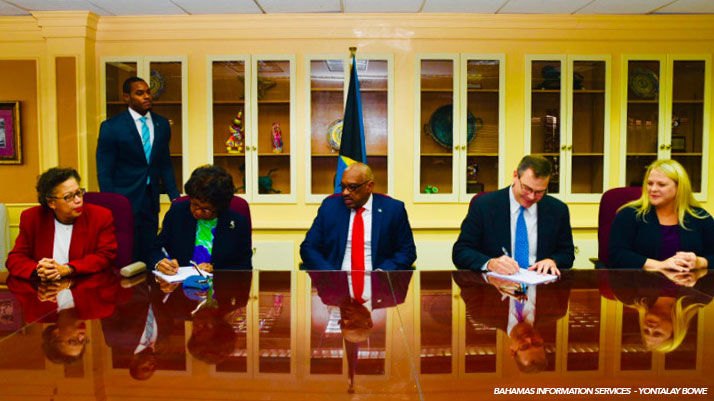
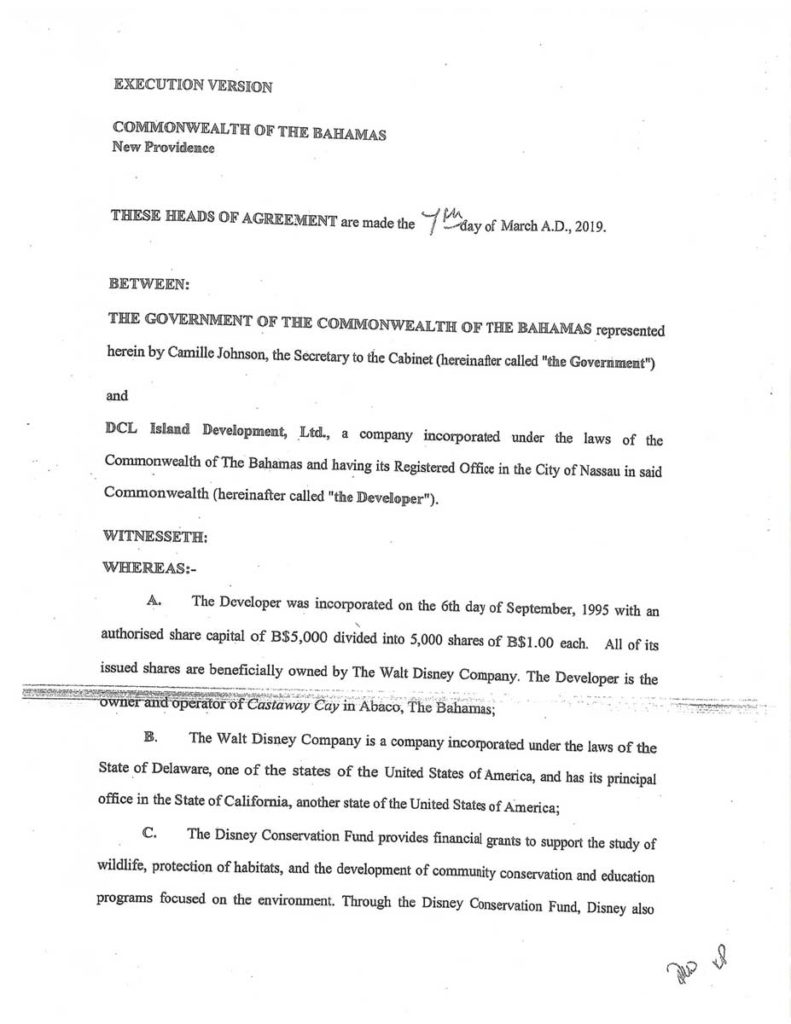
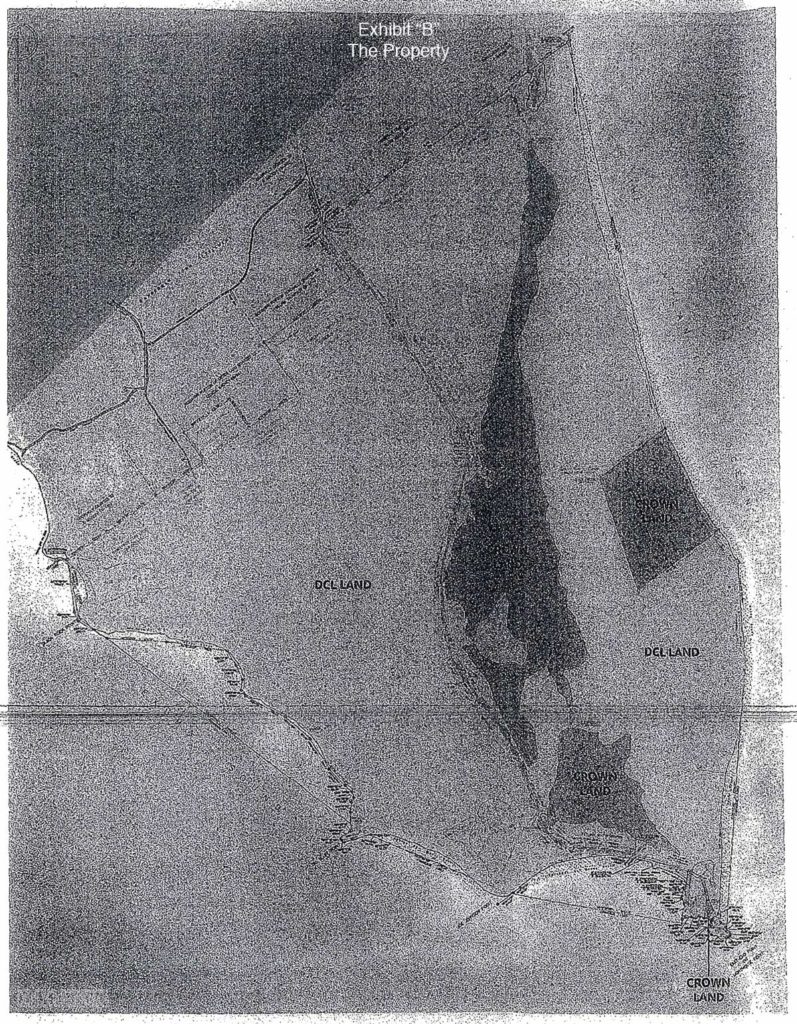
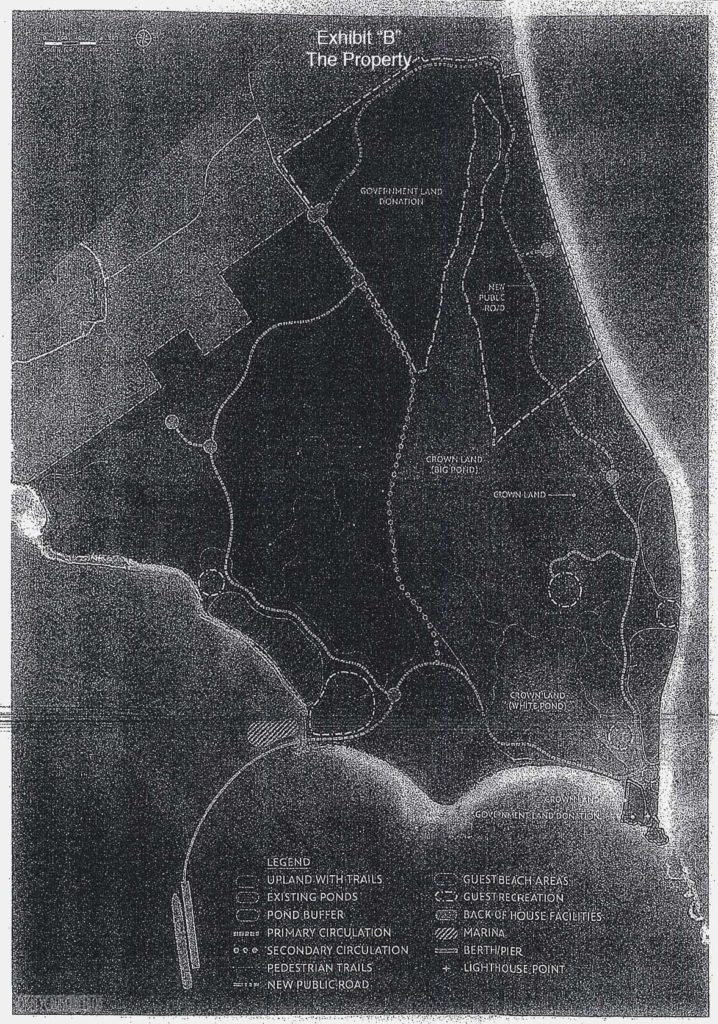
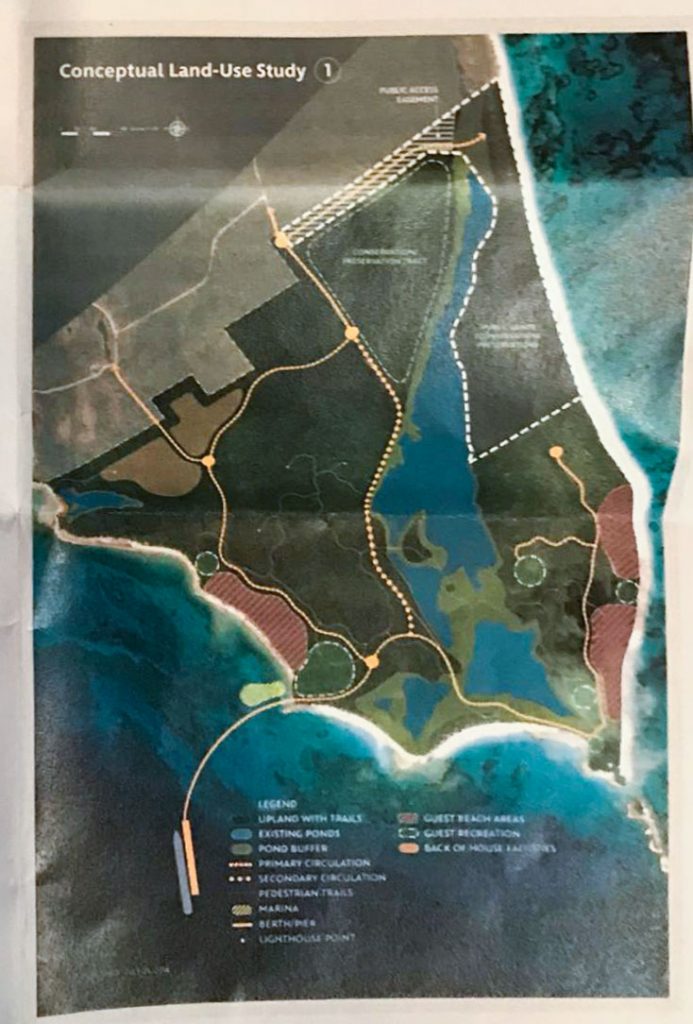
Thank you for summarizing the document! What an exciting read.
Exciting?? Only a fool would say that.
Disney should make the lighthouse point and both surounding beaches gov land and move the peir so it’s not seen from light house point. Lighthouse point is a sight to see and should be left that natural way. Crusie ship passangers I bet would be fine with the other beaches on the land Disney owns. Eleuthera needs to realize the people on the other 100 miles of island want to go to light house.
the way to “preserve the environmental integrity of the property” is not to develop it. increased physical traffic on the reef and sewage will kill the coral (what isn’t dead already). Shame on Disney
Absolutely nothing exciting about it for us.
Let me summarize it from our point of view.
First Disney should never have been given permission to purchase the land. One Eleuthera Foundation was actively trying to get a Land and Sea Heritage Park approved for the sight.
Suffice it to say, the Bahamas government once again chose a foreign developer over its own proven citizens. That’s on us.
What’s entirely on Disney is that they have failed epically for their continued refusal to meet environmental organizations to discuss their considerable concerns with siting an industrial pier in a proposed marine protected area. We have repeated called on them to consider an alternative to a cruise port. One would think with the imaginations on retainer at Disney that should be a no brained.
But as much as they say they care for the environment they certainly don’t walk the walk. This is about money. The Bahamas government negotiated $805 million over 25 years. In 1 YEAR 1 Disney ship will make 830 million dollars! That does not include what they sell on and off board the ship. And consider that next year that will be x4.
Their EIA is fundamentally flawed and does not address the impacts of 1 MILLION PEOPLE a year at a pristine site. The impacts to corals from sunscreen, and their man made beaches which will smother the corals in the first storm, boating emissions and fluids, their EIA does not address impacts to grouper, bonefish, whales, dolphins, endangered corals, endangered birds.
I could go on. In essence they should be embarrassed to produce such an incomplete document and call it a job well done. I invite you to read our comments to the Department of Environmental Planning and Protection and Disney at http://www.StopDisney.com